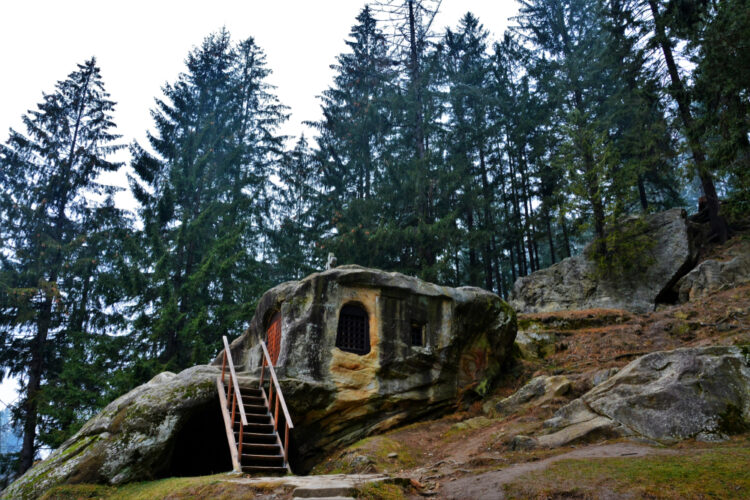Hidden in the forests of Romania’s Bucovina region, just two kilometers from the famous Putna Monastery, lies a rather remarkable home built by an Orthodox Christian Monk – the hermitage cave of Daniel the Hesychast (Daniil Sihastru). This sanctuary, Daniel the Hesychast carved from a massive rock formation with 15th-century tools and his bare hands, and in doing so, became one of Romania’s most venerated spiritual figures.
Daniel the Hesychast (1400-1482) was a Romanian Orthodox monk whose life became intrinsically linked to the religious and political landscape of medieval Moldavia. After serving as a monk at Putna Monastery, he chose the path of extreme asceticism, retreating to his secluded cave where he lived as a hermit for many years.
The term “Sihastru” in his name literally means “hermit” in Romanian, while “Hesychast” refers to the Eastern Orthodox practice of inner prayer and contemplation. His dedication to the hesychast tradition, which emphasizes silence, solitude, and unceasing prayer, made him one of the most influential spiritual figures of his time.
The hermitage consists of two main chambers Daniel carved into the natural rock. The first chamber served as his chapel, where he would pray and occasionally receive visitors. The second, smaller chamber was his living quarters, where he spent his nights in prayer and meditation. The cave’s entrance is relatively modest, requiring visitors to bend down to enter, symbolizing the humility required in approaching sacred spaces.
Inside, the cave maintains a constant temperature throughout the year, providing natural shelter from both summer heat and winter cold. The walls bear witness to centuries of history, with smooth surfaces created by both natural processes and human modification. Small niches carved into the rock walls likely held icons and candles during Daniel’s residence.

The cave gained particular historical importance during the reign of Stephen the Great (Ștefan cel Mare), ruler of Moldavia from 1457 to 1504. According to historical accounts, Stephen sought Daniel’s spiritual guidance before and during his campaigns against the Ottoman Empire. The hermit’s prophecies and counsel were highly valued by the ruler, who would make the journey through the forest to consult with the holy man. Daniel’s cave became not just a place of personal devotion but a site where crucial decisions affecting the fate of the entire principality were contemplated through prayer and discussion.
The hermitage is situated on a forested hillside in Bucovina. The surrounding landscape is characterized by dense forests, typical of the Carpathian Mountain region. The cave’s elevated position offers views of the surrounding valley. The path to the cave from Putna Monastery follows a well-marked trail through the forest, allowing pilgrims and other modern-day visitors to experience something of the solitude that attracted Daniel to this location.
Today, Daniel the Hesychast’s cave remains an important pilgrimage site for Orthodox Christians and a significant cultural monument. The saint’s reputation for wisdom and holiness continues to draw visitors from across Romania and beyond. His cave represents a living link to the hesychast tradition and the spiritual practices of Orthodox monasticism.
The Romanian Orthodox Church canonized Daniel in 1992, officially recognizing his significant contribution to Romanian spirituality. His feast day is celebrated on December 18th, when special services are held both at Putna Monastery and near the cave. The site is maintained by Putna Monastery, which ensures its preservation while making it accessible to visitors. A small wooden structure has been built near the cave entrance to protect it from the elements and provide a gathering space for pilgrims. However, great care has been taken to preserve the cave’s original character and spiritual atmosphere.
Visitors can access the site year-round, though winter visits may be challenging due to weather conditions. The cave’s relative isolation has helped preserve its authenticity, allowing modern visitors to experience the setting much as it would have appeared in Daniel’s time.


